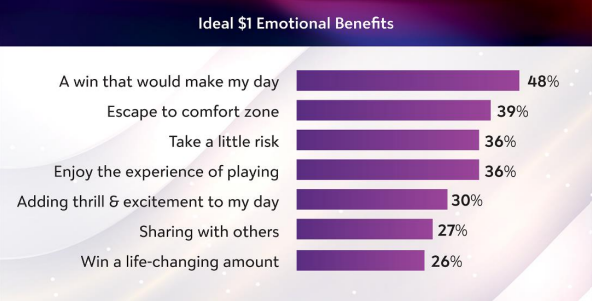New Research Highlights Special Role Of $1 and $2 Scratch Tickets, Despite Declining Sales
Scientific Games analyzes role of the basic $1 and $2 scratchers in the lottery ecosystem
2 min

Lottery and sports betting technology company Scientific Games recently completed a comprehensive deep dive into the role of $1 and $2 instant scratch games. It recently shared its research at the NASPL Professional Development Seminar in Omaha, Nebraska, providing insight into how valuable certain lottery products are to different markets.
Scientific Games Director of Business Intelligence Rob Thompson and Director of Marketing Angela Saviano presented findings that highlight the crucial roles these lower price point games continue to play in the lottery industry, despite recent declines in game launches and sales. Their presentation, since shared as part of Scientific Games’ “Data in Motion” series, underscored the importance of understanding and strategically managing the diverse needs of lottery players across all price points.
Over the past five years, the $1 price point has experienced a significant 23% decline in game launches and a 38% decline in weekly per capita sales. Despite these trends, the research conducted by Scientific Games reveals that lower price point games still fulfill specific needs for certain segments of players.
Eliminating these games, therefore, could be detrimental to maintaining a healthy and balanced game portfolio.
Consumer satisfaction
Scientific Games set out to explore the relationship between different price points and the specific consumer needs they satisfy. The objectives included gaining a deeper understanding of the roles that each price point plays in enhancing player engagement and building a more comprehensive and valuable product line.

Through a combination of quantitative and qualitative methods, the study gathered insights from a nationally representative sample of lottery players to determine their preferences regarding game experiences, prize tiers, and communication strategies.
The research found that players have distinct expectations for games at different price points. For $1 games, in particular, players expressed a preference for familiar and straightforward experiences. These games often serve as part of the players’ routine, providing a comfortable and affordable form of entertainment.
The key attributes that players sought in $1 games included a quick win, ease of play, and an escape from daily stress. These findings suggest that $1 games are valued for their simplicity and the brief, yet satisfying, diversion they offer.
Furthermore, the study explored the purchasing behavior of players who consider $1 games their primary choice. It was revealed that a significant portion of these players, about 63%, did not purchase any other games during the same visit.
Among those who did buy additional games, $2 games were the most commonly chosen, followed by $5 games. This purchasing pattern indicates that while $1 games are central to these players’ lottery habits, there is also some crossover to slightly higher price points.
Aesthetics make a difference
In terms of game design, the research highlighted the importance of aligning ticket art, point-of-sale materials, and advertising with the identified player preferences to effectively communicate the value of different games. By doing so, lotteries can enhance player satisfaction and ensure that each price point serves its intended role within the overall portfolio.
The findings from this study are expected to guide future game development and marketing strategies. This will likely ensure that lower price point games remain an integral part of the lottery landscape.
Scientific Games plans to continue sharing insights from its national study, focusing on critical prize tiers, impactful callouts, and attribute testing across various price points. The company has encouraged state-specific evaluations of these findings to tailor prize structures and game attributes to the unique preferences of local player bases. This approach will help lotteries design research studies that align with national benchmarks while catering to the specific needs of their markets.






